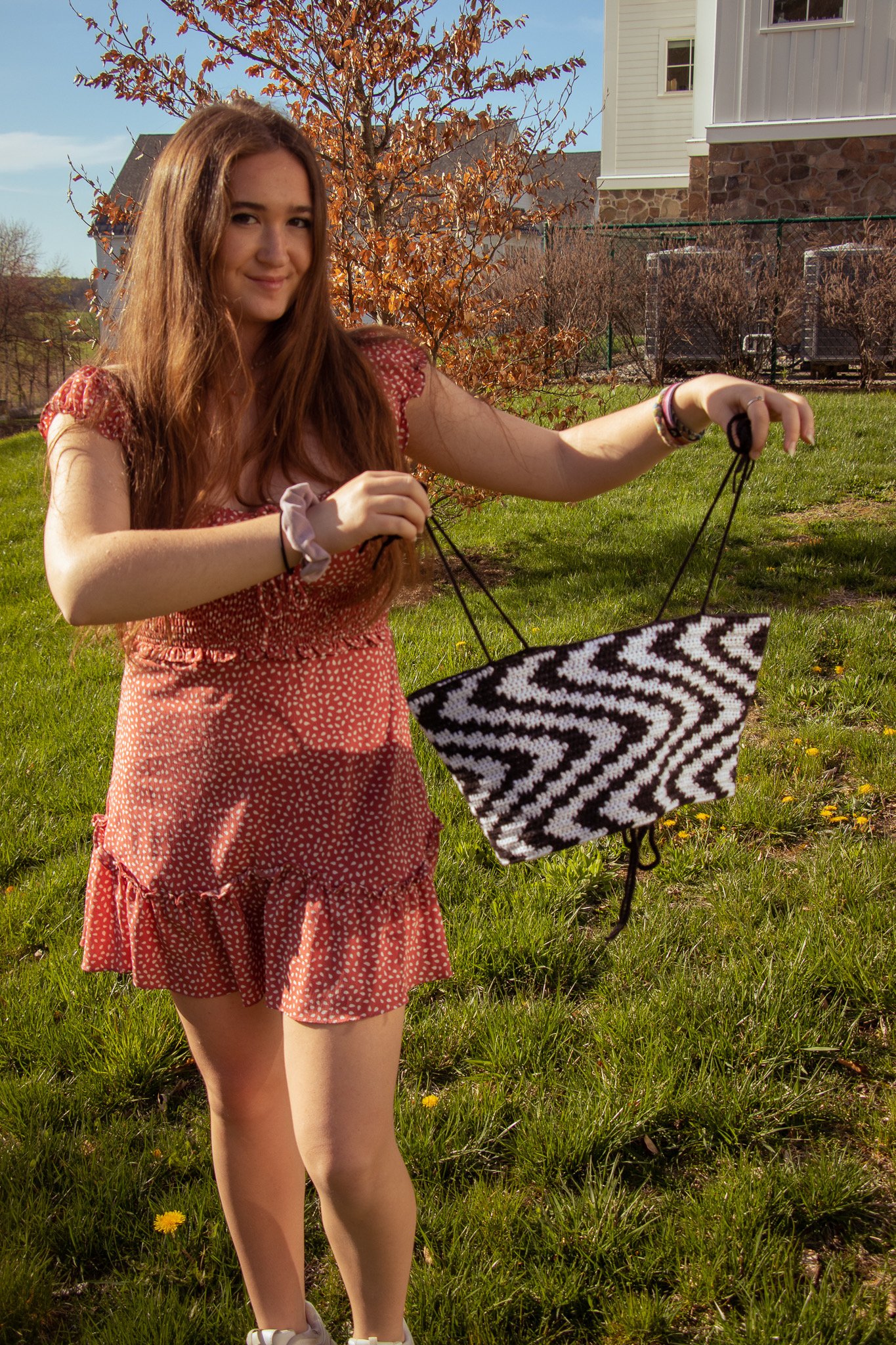Handmade: a Behind the Scenes Look at Crochet in Fast Fashion
By Charlotte Shapiro
Photography by Ajani Wilson
In recent years, the fiber art known as crochet has gained a massive amount of popularity in fashion and social media. Instagram and TikTok are now filled with pictures and videos of crochet artists creating handmade designs, in addition to the many stores now boasting racks of crocheted clothing for sale. Before we dive into the growing prevalence of crochet in mainstream fashion and media, however, it is important to first understand exactly what crochet is.
I, as a crocheter, often receive questions regarding what the difference is between crocheting and knitting, especially considering that knitting has dominated the world of fiber arts as seen in common, everyday fashion, for years. To explain the difference clearly, while knitting utilizes two needles and multiple active, or live, stitches, crochet is done with a singular hook and only one active stitch. An active stitch describes a loop that is part of a stitch in a knitting or crocheting project that is placed on a needle or hook such that, if the needle or hook were to be removed, the stitch would begin to unravel and the fabric being knitted or crocheted would come undone. So, examining the difference in the active stitches between knitting and crocheting, we see that crocheting, which only has one active stitch, requires the crocheter to weave more complex, textured stitches one at a time—as compared to knitting, which requires the knitter to simply move from row to row, completing one row at a time rather than a single stitch.
Now, what all of this dense, technical information about the stitches used in knitting vs. crocheting informs is the ease with which a creator—whether human or machine—can create a piece of fabric or clothing using either of the styles. Since knitting involves repeating the same stitch down a row until you reach the next row and do it over again, knitting can easily be replicated by a machine—and in fact, essentially all fabric used in mass manufactured clothing is created by machines that knit tiny threads. However, because crocheting involves one single loop on a hook and maneuvering that hook through previously created loops to create a stitch, crocheting is too complicated to be replicated by a machine. Yes—that is correct—any crochet that you see, even in a cardigan that Target is selling for $35, is handmade.
The implications that this has, as you might be thinking, are not to be taken lightly. Companies selling crocheted pieces for as cheap as $35 are outsourcing this work to sweatshops in impoverished countries, often paying their workers less than $1 per hour to churn out these crochet designs—by hand—to be sold for dirt cheap in stores like Target and Zara. The conditions in these sweatshops are deplorable: the crocheters work for hours on end without breaks, oftentimes developing muscle pain and arthritis in their hands from the constant crocheting, all while being paid an unlivable wage. This needs to change.
In addition to the terrible conditions that the workers in these sweatshops face, the designs that they create, as informed by the companies for which they work, are oftentimes stolen from smaller, individually owned crochet businesses. This not only hurts small business owners in the crochet industry, seeing as the wider public would be more inclined to pay a fraction of the price for the same crochet design sold by a fast fashion company as opposed to a small business; this stealing of designs also perpetuates the model of sweatshop-created, cheaply sold crochet items.
So ultimately, my purpose of spelling out the world of crocheting and its growing popularity among both small creators and large, fast fashion conglomerates is to inform. A couple months ago, even I was not aware of the fact that crocheting cannot be replicated by a machine, despite the fact that I have been crocheting for eight years. Although I have never purchased any crocheted items, as I prefer to design and create my own, I now know that I will never purchase a crocheted item at a store that participates in the outsourcing of its work to sweatshops. I hope that you, too, as the readers, can now understand why the overtaking of crocheting by large clothing companies is so deceitful. What was once a crafted, skillful fiber art form has been hijacked by greedy corporations for the sake of a profit, without regard for who they are hurting. So please, if you buy a crocheted item, please look into buying from small business owners who create their own merchandise—and if not, consider learning how to crochet yourself. I can promise that it is worth it.



